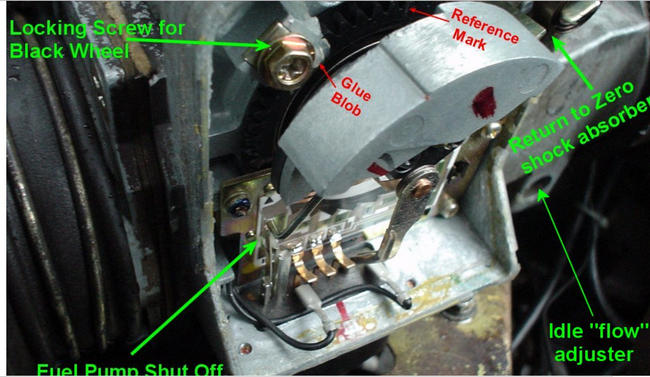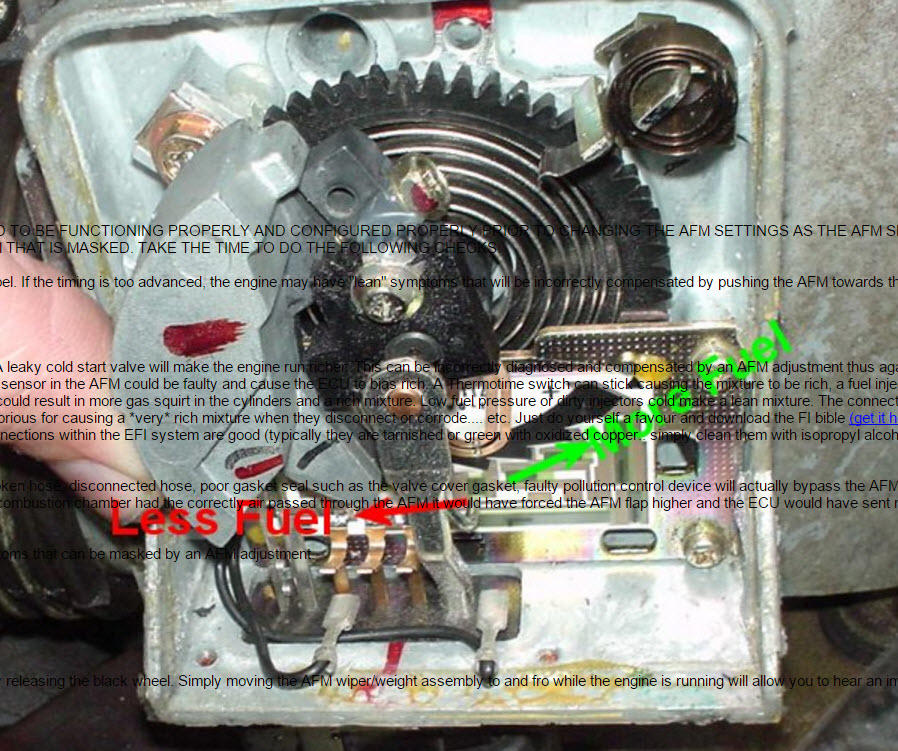FEATURES IN Picture 1: you will have to fool around to get this right. Not much info is given on this. See pic
The big grey chuck of metal is a counterweight. It is used to offset the weight of the wind vane "flap" in the air path.
The "Return to Zero Shock Absorber" is simply spring metal that absorbs the shock of the rotating Counterweight and Flap when the air flow stops. It prevents the AFM from beating itself to death every time the engine is stopped.
The Black Wheel and Coil Spring is the mechanism that controls how far the flap opens when air flows through the throttle body. This is the heart of the AFM and if the spring is set incorrectly, the related voltage to the ECU will be wrong and it will send too much or too little fuel. If the spring is wound too tight, the AFM's flap will not move enough and the ECU will not send enough fuel thus a lean mixture will occur. If the spring is wound too loose, the AFM's flap will move too much and the ECU will send too much fuel thus a rich mixture will occur.
IT IS IMPORTANT TO POINT OUT THAT THE BLACK WHEEL IS UNDER TENSION AND THAT REMOVING THE LOCKING SCREW WILL RESULT IN IT GOING "SPRONG" and RECOILING.
BE SURE TO MARK A TOOTH PRIOR TO TOUCHING THE LOCKING SCREW! Besides I have not got to that step yet so hands off! :)
You will also notice a blob of silicone or glue. If this is broken, you can immediately determine that the AFM was "messed with". Upon inspection of my 77z, the previous owner had obviously turned the black wheel about 10 tooth-steps to the lean side as a smaller part of the blob had been separated and was 10 teeth to the right.
Please note the reference mark that I scribed into the black wheel. It is impossible to see but there is a corresponding scribe mark in the cast metal body as well. (It is good to have both wheel and body scribed in the same location. Preferably at the centre of a tooth.
Idle Flow Adjust
This allows you to tweak the position of the AFM flap at idle thus you can control the rich/lean mixture. This adjustment controls the air flowing around the flap in a "bypass" passage under the AFM's main passage. It works in a similar fashion to the idle set screw in the throttle body.
Image (Click to make bigger)
Thursday, November 5th, 2015 AT 12:53 PM






